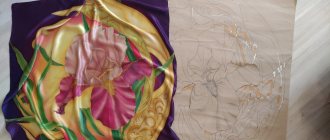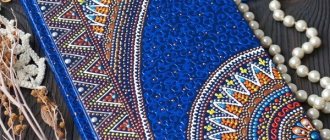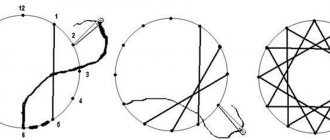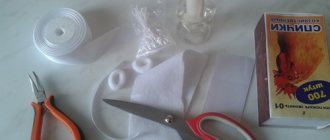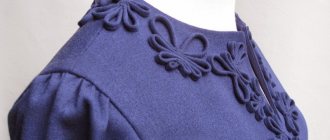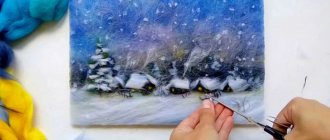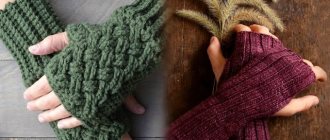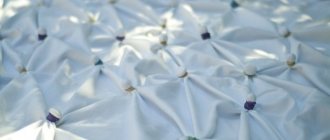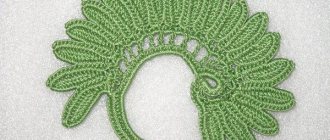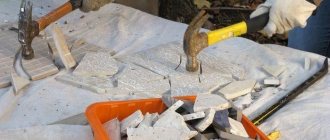Needlework
06/25/2018 Anastasia Prozheva
Coloring fabric is a very affordable activity even at home. Nowadays, there is a huge selection of paints and tools on sale. This article provides information, if not all, then the main secrets of batik for beginners, master classes on making an exclusive silk scarf, as well as a story about some of the methods and features of painting on fabric.
Application of batik
Batik is used primarily on natural fabrics, although there are dyes for synthetic textiles. It is rarely used, since working with silk and cotton is a pleasure for artists and beginners. Painting fabric is useful in many cases, for example, for creating paintings. Water stains and clear boundaries, floating tints of colors are allowed on fabric much faster than on paper.
Creating an individual style and coloring of clothes for silk blouses, scarves, cotton bedding sets or T-shirts, dresses. At home, it is quite possible and most importantly to safely paint an item with special paints on fabric.
Features by art
Paints are labeled according to their intended purpose and have accompanying instructions for use. Acrylic and aniline paints are diluted with water, but do not rush to get it from the tap. Water should be used pre-purified or distilled to avoid unsightly stains due to impurities in the water. Although, on the contrary, if you specifically add ordinary table salt to the solution, you can paint beautiful spotted drops.
In batik, painting usually begins with the application of a special reserve compound that will limit the paint.
It is applied in such a way that closed islands are formed, and if everything is done correctly, it will completely prevent paint from getting beyond the boundaries of the design.
Paints are mostly water-based, so you can vary the shades and saturation by diluting them in water. The brushes used are mostly synthetic. On silk and thin fabrics, light aniline dyes are often used; acrylic is taken as a heavy film and it is advisable to use it either in a very diluted form, which will lead to a loss of brightness of the colors, or on dense fabrics. However, rubber applications are quite common on T-shirts, which in most cases do not spoil the look.
Related article: Pig from a plastic bottle: step-by-step instructions with video
To paint on fabric, you need to stock up not only with paints and a special solution for the reserve, but also with quite exotic tools - tubes for liquid reserve based on gasoline and rubber glue and copper chanting, if hot wax is used.
The fabric is secured to a frame made of wooden slats using buttons. You can use a board if the amount of work is small. Pictures are also applied in various ways. Depending on the degree of artistic skills, you can use stencils and templates, or paint by hand with brushes.
History of magical craft
Evidence of early examples of batik has been found in the Far East, Middle East, Central Asia and India over 2,000 years ago. It is possible that these areas developed independently, without the influence of trade or cultural exchanges. However, it is more likely that ship craft spread from Asia to the islands of the Malay Archipelago and from the west to the Middle East via the caravan route. Batik has been practiced in China since the Sui Dynasty.
You might be interested in this: Patterns and sewing of a “swing” collar for dresses and blouses
These were silk batiks that were also discovered in Nara, Japan, in the form of screens and attributed to the Nara period. It is likely that they were made by Chinese artists. They are decorated with trees, animals, flute players, hunting scenes and stylized mountains.
Painted fabric
No evidence of very old cotton batiks has been found in India, but the murals in the Ajunta Caves depict headdresses and garments that may well have been batiks. In Java and temple ruins in Bali, there are figures whose clothing has a batik-like pattern. By 1677 there was evidence of a significant export trade, mainly in silk from China to Java, Sumatra, Persia and Hindustan. Linen and sometimes woolen fabrics with white patterns on a blue background have been excavated in Egypt. They were made in Egypt, possibly Syria.
Representatives of the tribe who practiced the craft
Indonesia, especially the island of Java, is the area where batik has reached its highest pinnacle. The Dutch brought Indonesian craftsmen to teach the craft to Dutch overseers in several factories in Holland from 1835. The Swiss produced imitation batik in the early 1940s. The wax block seal form was developed in Java using a cap.
By the early 1900s, the Germans began mass production of batiks. There are many examples of this form of batik as well as handmade in many parts of the world today. Computerization of batik techniques is a very recent development.
Several ways
Batik is done in several ways. The first method is called the knot method and it is done quite simply. Using special dyes, or natural ones (for example, onion skins, red cabbage, beets, spinach), make a solution in a plastic or enamel container; it will still be colored so that you can’t wash it off with anything, so take what you don’t mind. The fabric is then tied tightly with threads and dipped in dyes.
Cold batik is the use of gasoline reserve, the outlines of the design are applied with a glass tube, then hand-painted with paints and brushes.
The hot batik technique is performed using melted wax and immersing the product in dye. Drawings of all types and methods of coloring will differ from each other.
Fabric painting at home
Let's look at a clear example of creating a silk scarf with your own hands.
We will need a number of materials and tools, which, however, are commercially available:
- Silk size 35*160 cm;
- Reserve for cold batik based on gasoline;
- Glass tube for reserve;
- Paints and silk;
- Synthetic brushes of different thicknesses;
- Frame made of wooden slats;
- Push pins;
- Sketches on cardboard.
Step 1. We fix the wet silk in the stretcher using buttons. The fabric needs to be stretched well so that we can form an elastic canvas. We place the paper with the sketch underneath, now it will be easy for us to repeat the drawing.
Related article: 5 ways to easily starch a napkin
Step 2. We apply the first touches with a reserve compound. We draw it into a glass tube with a syringe or syringe. Pour a little liquid so that when you touch the fabric it does not spread in a wide spot. Apply the composition along the contours of the drawing, avoiding breaks. You need to give the lines time to dry.
Step 3. We begin to paint the scarf with paints, wet a large brush with boiled cold water, go over all areas, then, dipping it into the paint, make light stains. This is the first layer. Waiting for it to dry.
Step 4. Work again for the reserve. Draw additional details, in our case these are the stems. Then we take the paint again and paint the background and the stems from the inside with water stains. Let the work dry.
Step 5: Using a semi-dry, thin brush, outline and add fine detail. After drying for about 3-5 minutes, the finished scarf is removed from the frame and ironed.
master class of drawings with photos and videos
The art of batik is the painting of fabric using reserve, a substance that covers the fabric where it should not be dyed. A beautiful form of art that can be used to create drawings, decorate interiors and clothing. A master class can tell you what the batik technique is for beginners.
Kinds of art
Cold. In this method, the reserve is applied in a closed contour, within which the fabric is painted.
Hot. Hot reserve can either be applied as a contour or cover some areas of the fabric.
Free painting. The entire drawing is applied with paint, the reserve is used only in the final stage.
Knot batik. This option is very different from the previous ones. This is not so much painting as it is rather fabric dyeing. The canvas is folded in various ways, tied or stitched with thread and then painted with paint.
Batik uses different fabrics. Smooth ones such as silk, viscose or cotton are best.
In this style you can create beautiful panels. Batik is very diverse and does not have strict rules. Each artist brings something different to art, so each product made using this technique is unique.
Here we will consider a master class on working in the style of cold batik. It's great for beginners.
Fabric grapes
What you will need for work:
- Smooth fabric to choose from;
- Frame with buttons or hoop;
- Paints for painting on silk, maybe watercolor;
- Reserve;
- Glass tube or applicator;
- Brushes;
- Decorative outline for fabric.
First, wash the fabric with soap, since the material is coated with a special substance that will interfere with painting. The damp fabric should be stretched onto the hoop and allowed to dry.
Select the design you like and fit the size. You can draw the template yourself.
Just remember that you should not make very small details in the drawing.
You need to outline the outline with a marker and adjust the size.
Secure from the inside out with paper tape.
The sketch should be clearly visible through the fabric. Trace the outline from the front side with a pencil. You can immediately apply the reserve, only in this case the sketch should be at some distance from the fabric. If they touch each other, the reserve will blur into sloppy spots in this place.
After the outline is outlined, you need to remove the template. The reserve should be applied carefully so that it saturates the entire fabric. There should be no break in the lines. Apply reserve and leave to dry. Different reserves dry differently depending on the brand.
Start pouring paint from the background. It can be undiluted paint, but if lighter colors are needed, it needs to be diluted with water. Take a little paint according to quantity. Work with them the same way as with watercolors.
Now start coloring other elements. Let the fabric dry. When drying, the paints fade, so you can add a second layer, if necessary.
At this stage, you can finish or draw and highlight something with an outline. Let it dry again. The work is ready.
pg
These are the best paintings for beginners.
Video on the topic of the article
Here you can watch various video master classes for beginners on working in different types of batik techniques.
Similar articles:
knittochka.ru
